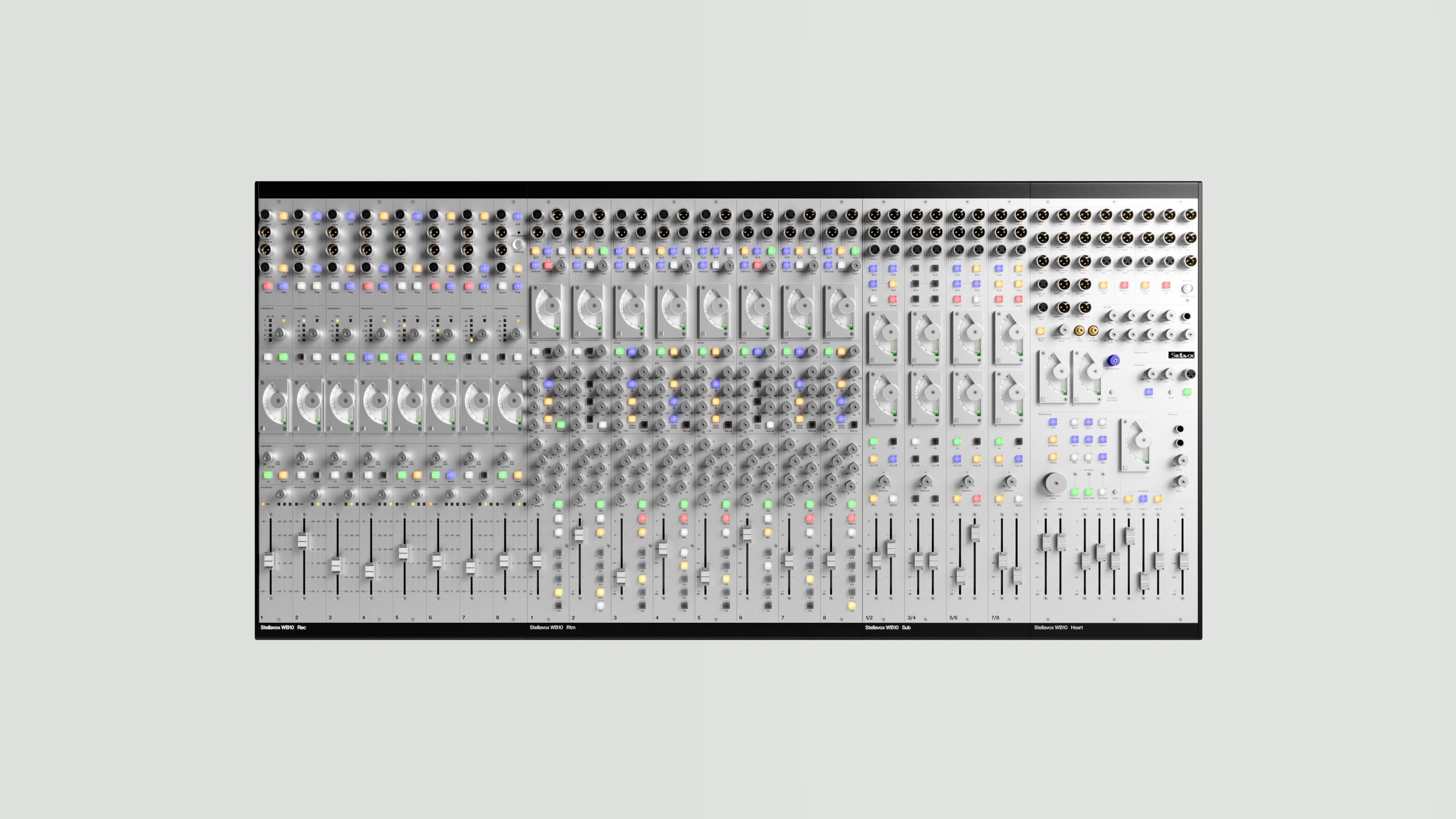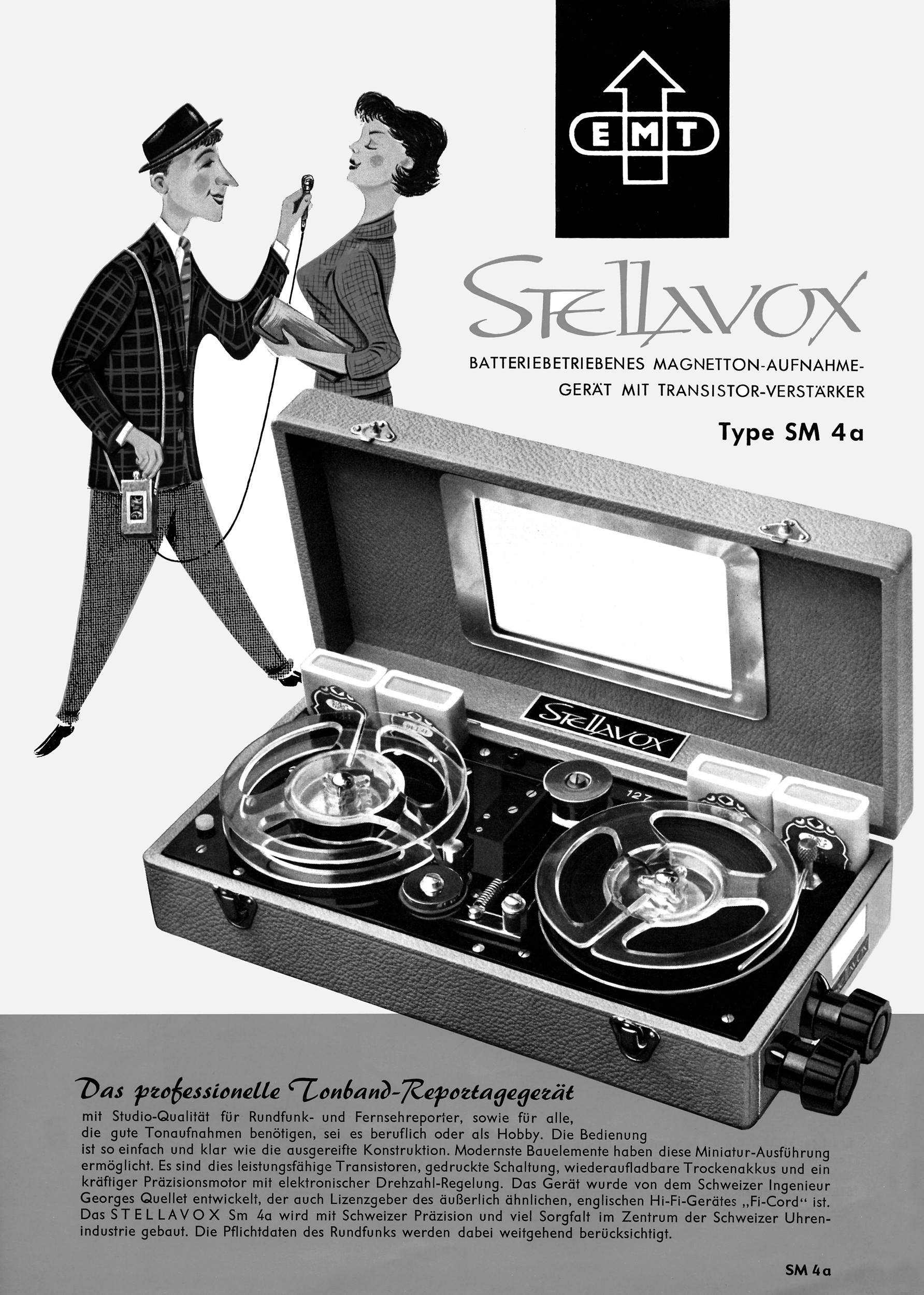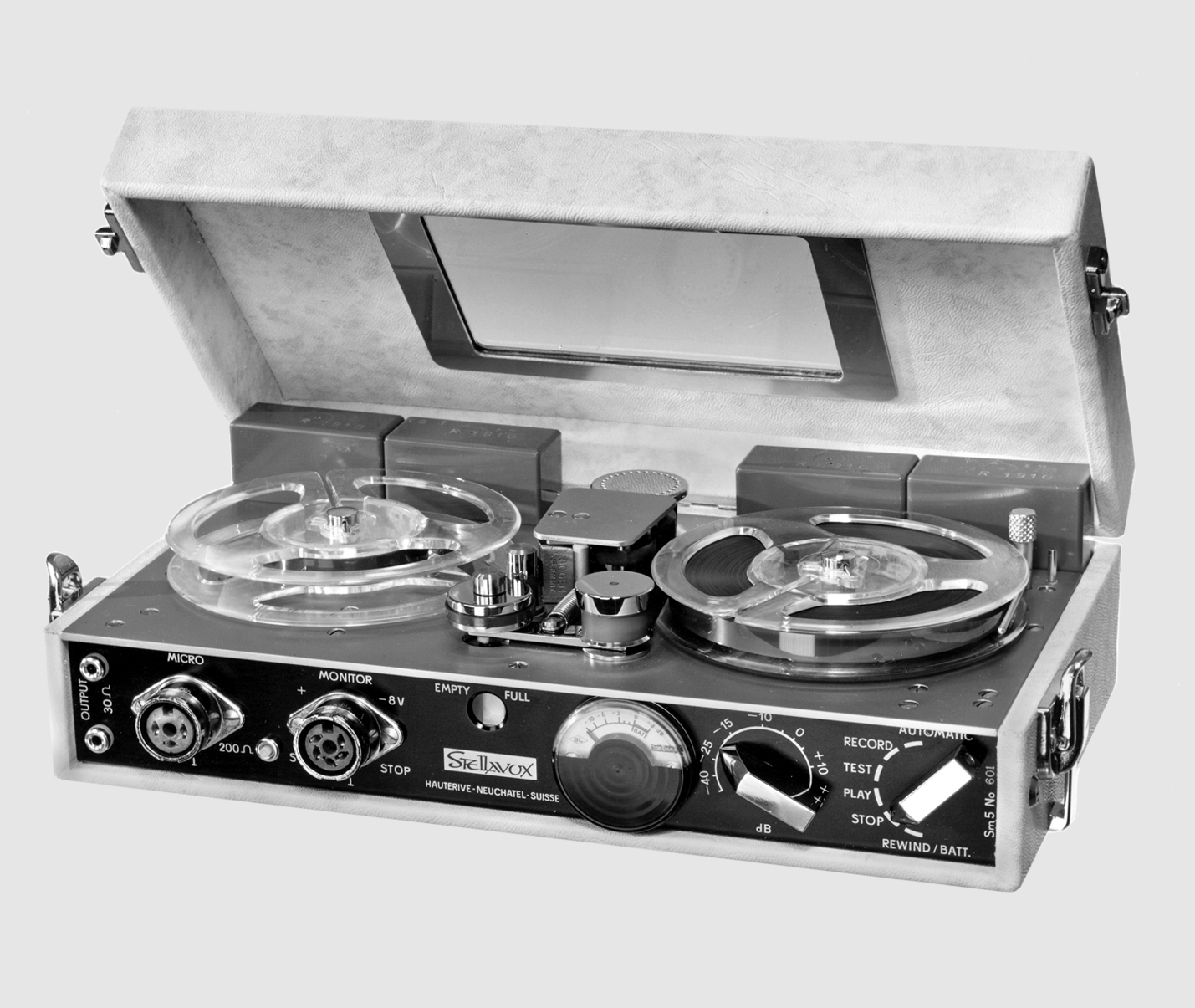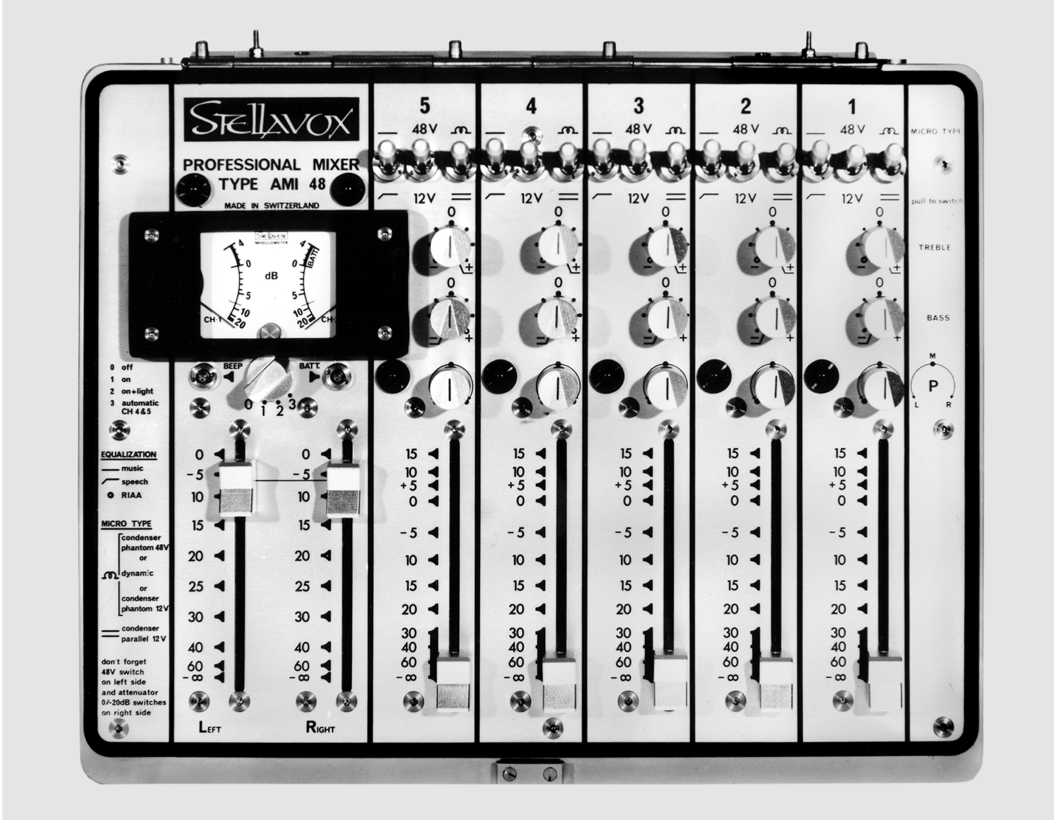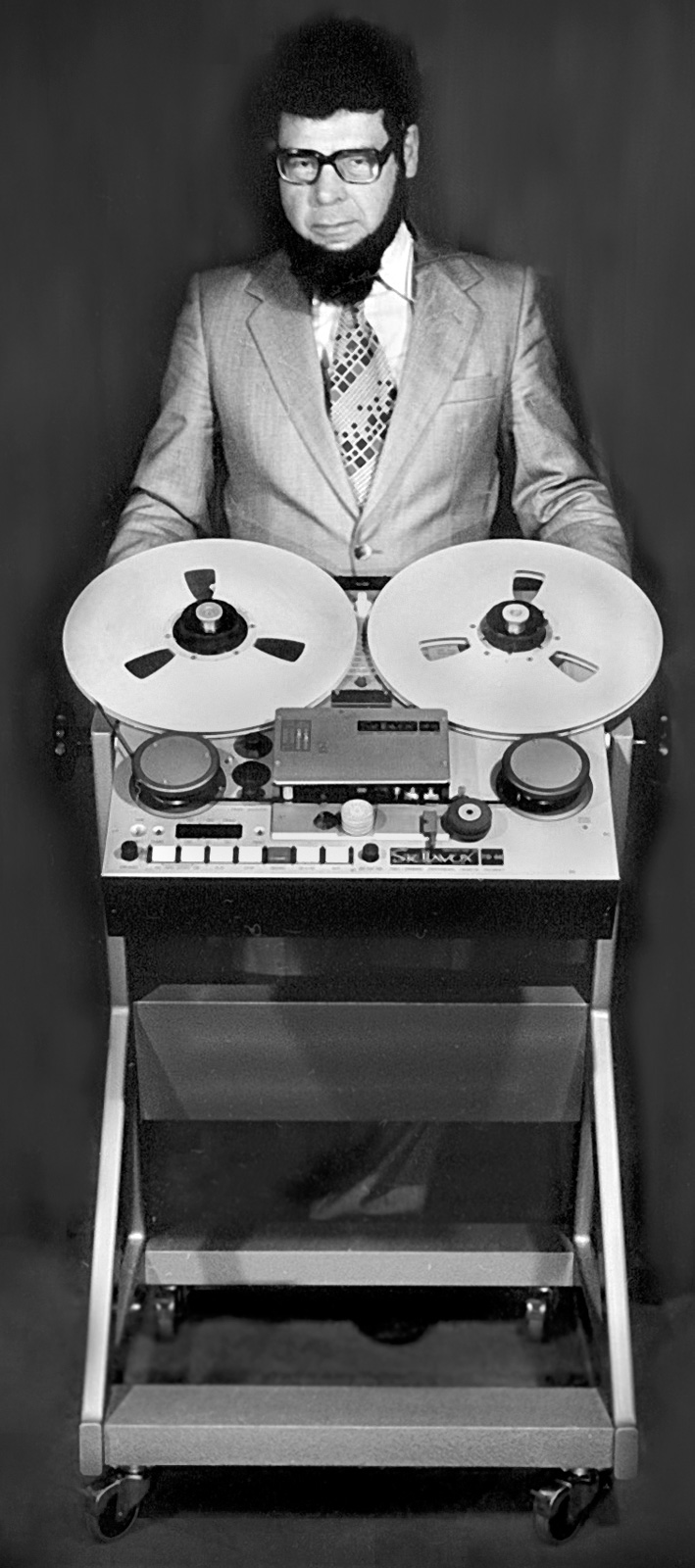Swiss made
Since 1953
Stellavox
The motivation behind every stage of our research, development and production process comes from the wish to create exclusive products with exceptional sound quality and longevity, which ignite passion in the user, and reflect the true spirit of Stellavox while embracing the technologies of today.
Products
Products
Seventy years of history

Stellavox SA
via Beroldingen 18
6850 Mendrisio
Switzerland
Contact
tape@stellavox.swiss
+41 91 630 0710
+41 91 630 0711
Legal notes
© 2025 Stellavox SA.
All Rights Reserved
Credits
Website (design and code):
Studio 0x000, Leonardo Angelucci
Photography and render:
Studio 9010, Alessandro Ruffini
The website www.stellavox.swiss (the "Site") is the property of STELLAVOX S.A. ("STELLAVOX"), which has created it for information, communication, and entertainment purposes and made it available to users exclusively for personal, non-commercial, use.
The trademark STELLAVOX SA, the trademarks on STELLAVOX products and promotional activities that are displayed on the pages of the website (including the relevant logotypes) as well as any other distinctive signs, whether denominative, figurative or consisting in a slogan, related to them (hereinafter the “STELLAVOX Trademarks”) are the exclusive property of STELLAVOX S.A. and/or of other Companies of the STELLAVOX Group. Any use or reproduction of such STELLAVOX Trademarks for whatever reasons or by any means is expressly and strictly prohibited and shall be prosecuted under relevant laws.
The trademarks, logos, and characters belonging to third parties, which are displayed in the website, are the exclusive property of their owners, who have authorized their use: any reproduction is prohibited.
The web pages constituting the website, and all relevant contents (including, for example, but not limited to: text, images, graphics, sounds), are protected by copyright owned by STELLAVOX or include material the use of which has been duly authorized; thus their reproduction, duplication, publication, transmission (in whole or in part) in any form or by any means is prohibited. No reproduction of the website or any part of it may be sold or distributed for commercial purposes.
No reproduction of the website or any part of it may be sold or distributed for commercial purposes.

Stellavox SA
via Beroldingen 18
6850 Mendrisio
Switzerland
Contact
tape@stellavox.swiss
+41 91 630 0710
+41 91 630 0711
Legal notes
© 2025 Stellavox SA.
All Rights Reserved
Credits
Website (design and code):
Studio 0x000, Leonardo Angelucci
Photography and render:
Studio 9010, Alessandro Ruffini
The website www.stellavox.swiss (the "Site") is the property of STELLAVOX S.A. ("STELLAVOX"), which has created it for information, communication, and entertainment purposes and made it available to users exclusively for personal, non-commercial, use.
The trademark STELLAVOX SA, the trademarks on STELLAVOX products and promotional activities that are displayed on the pages of the website (including the relevant logotypes) as well as any other distinctive signs, whether denominative, figurative or consisting in a slogan, related to them (hereinafter the “STELLAVOX Trademarks”) are the exclusive property of STELLAVOX S.A. and/or of other Companies of the STELLAVOX Group. Any use or reproduction of such STELLAVOX Trademarks for whatever reasons or by any means is expressly and strictly prohibited and shall be prosecuted under relevant laws.
The trademarks, logos, and characters belonging to third parties, which are displayed in the website, are the exclusive property of their owners, who have authorized their use: any reproduction is prohibited.
The web pages constituting the website, and all relevant contents (including, for example, but not limited to: text, images, graphics, sounds), are protected by copyright owned by STELLAVOX or include material the use of which has been duly authorized; thus their reproduction, duplication, publication, transmission (in whole or in part) in any form or by any means is prohibited. No reproduction of the website or any part of it may be sold or distributed for commercial purposes.
No reproduction of the website or any part of it may be sold or distributed for commercial purposes.

